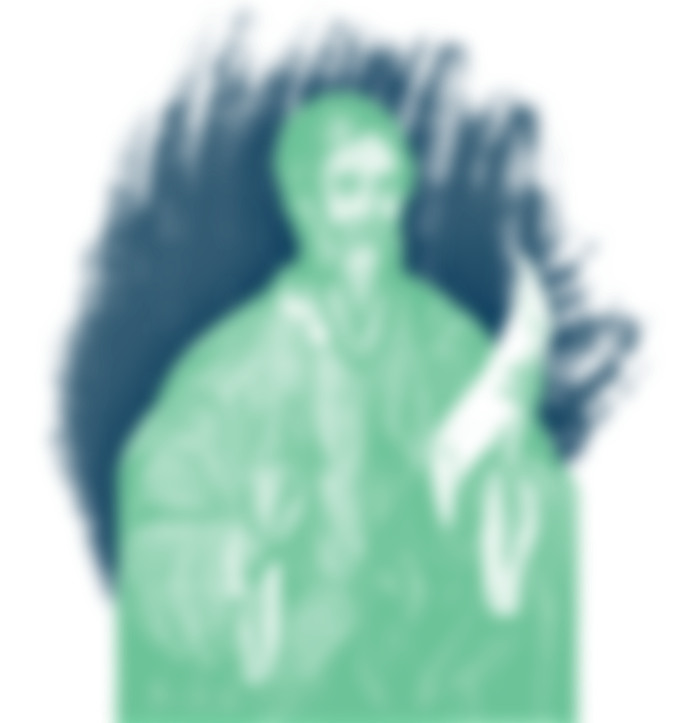
In the Bible, Jesus Christ names 12 missionaries to spread his gospel, and the early Christian church owes its fast ascent to their minister enthusiasm. However, for the greater part of the Twelve, there's insufficient proof of their reality outside of the New Testament.
While Christian custom regularly alludes to the witnesses as being twelve in number, distinctive gospel scholars give various names for a similar individual, and missionaries referenced in one gospel are not referenced in others. There is likewise an Eastern Christian convention got from the Gospel of Luke of there having been upwards of 70 messengers during the hour of Jesus' service.
Paul is frequently alluded to as a missionary because, in the story of Acts, he was straightforwardly instructed and dispatched by a dream of Christ (Acts 9:4–9) during his excursion to Damascus. The appointing of the Twelve Apostles during the service of Jesus is recorded in the Synoptic Gospels. After his revival, Jesus sent eleven of them (less Judas Iscariot, who by then had kicked the bucket) by the Great Commission to spread his lessons to all countries. This occasion has been known as the Dispersion of the Apostles.
The names of Jesus’ 12 main disciples are:
1.Peter (also known as Simon)

St. Peter the Apostle, unique name Simeon or Simon, follower of Jesus Christ, perceived in the early Christian church as the head of the 12 devotees and by the Roman Catholic Church as the first of its solid progression of popes. Diminish, a Jewish angler, was called to be a supporter of Jesus toward the start of Jesus' service. He got from Jesus the name Cephas (from Aramaic Kepa "Rock"; subsequently Peter, from Petros, a Greek interpretation of Kepa.
2.Andrew

St. Andrew, additionally called Saint Andrew the Apostle, one of the Twelve Apostles of Jesus and the sibling of St. Dwindle. He is the benefactor holy person of Scotland and Russia. In The Gospel According to John, Andrew is the principal Apostle named, and he was a pupil of St. John the Baptist before Jesus' call.
3.James (Son of Zebedee)

St. James, additionally called James, child of Zebedee, or James the Greater, one of the Twelve Apostles, recognized as being in Jesus' deepest circle and the main missionary whose affliction is recorded in the New Testament (Acts 12:2). James and his more youthful sibling, the missionary St. John, are assigned Boanerges (from the Greek Boanerges), or "children of thunder" (Mark 3:17), may be due to their trademark red hot energy (Mark 9:38, Luke 9:54). With Saints Peter and Andrew, James and John were the initial four followers whom Jesus called (Mark 1:16–19) and whose question ("Tell us, when will this [the end of time) be, and what will be the sign when these things are all to be cultivated?") flashes Jesus' eschatological talk in Mark 13.
4.John

St. John the Apostle, "the adored supporter" of Jesus, John's Gospel varies from the Synoptic Gospels in a few different ways: it covers an unexpected period in comparison to the others; it finds quite a bit of Jesus' service in Judaea, and it depicts Jesus talking finally on religious issues. John was considered in antiquated occasions to be the "otherworldly Gospel," and it employed a significant and enduring impact on the improvement of early Christian teaching.
5.Philip

St.Philip the Apostle, one of the Twelve Apostles. Referenced simply by name in the Apostle arrangements of the Synoptic Gospels, he is a continuous character in the Gospel According to John, as per which (1:43–51) he came from Bethsaida, addressed Jesus' call ("Follow me"), and was instrumental in the call of St. Nathanael (likely St. Bartholomew the Apostle), whom he brought to Jesus. At the hour of his call, Philip had a place with a gathering impacted by St. John the Baptist. He took an interest in the marvel of the portions and fishes (John 6:5–9), representing his image in middle age specialty of portions. With St. Andrew the Apostle, he carried word to Jesus that specific Greeks had requested to see him (John 12:21–22). In John 14:8–9, Philip requested that Jesus uncover the Father, getting the appropriate response, "Have I been with you so long, but you don't have any acquaintance with me, Philip? He who has seen me has seen the Father."
6.Bartholomew

St. Bartholomew, one of the Twelve Apostles. Aside from the notices of him in four of the Apostle records (Mark 3:18, Matt. 10:3, Luke 6:14, and Acts 1:13), nothing is thought about him from the New Testament. Bartholomew is a family name signifying "child of Tolmai, or Talmai," so he may have had another individual name. Thus and because he was constantly connected with St. Philip the Apostle in the Gospel records, a ninth-century convention distinguished him with Nathanael, who, as per John 1:43–51, was called with Philip by Jesus.
7.Thomas

St. Thomas, one of the Twelve Apostles. His name in Aramaic (Teʾoma) and Greek (Didymos) signifies "twin"; John 11:16 recognizes him as "Thomas, called the Twin." He is called Judas Thomas (i.e., Judas the Twin) by the Syrians. Thomas's character is sketched out in The Gospel According to John. His commitment to Jesus is communicated in John 11:5–16: when Jesus intended to re-visitation Judaea, the devotees cautioned him of the Jews' hostility ("presently trying to stone you"), to which Thomas before long answered, "Let us additionally go, that we may bite the dust with him." At the Last Supper (John 14:1–7) Thomas couldn't fathom what Jesus implied when he stated, "I will come back again and will take you to myself, that where I am you might be moreover. Furthermore, you know the way where I am going." Thomas's inquiry "How might we know the way?" made Jesus answer, "I am the way, and reality, and the life."
8.Matthew

St. Matthew, likewise called St. Matthew the Evangelist, St. Matthew the Apostle, or Levi, one of the Twelve Apostles of Jesus Christ and the conventional creator of the primary Synoptic Gospel. As per Matthew 9:9 and Mark 2:14, Matthew was perched by the traditions house in Capernaum (close to present-day Almagor, Israel, on the Sea of Galilee) when Jesus called him into his organization. Expecting that the ID of Matthew with Levi is right, Matthew (likely signifying "Yahweh's Gift") would seem, by all accounts, to be the Christian name of Levi (called by Mark "Levi the child of Alphaeus"), who had been utilized as an expense authority in the administration of Herod Antipas, tetrarch of Galilee. Since Levi's occupation was one that procured doubt and scorn all over the place, the recorders of the Pharisees scrutinized Jesus on observing him eat with charge authorities and miscreants, whereupon Jesus replied, "I came not to call the honorable, but rather heathens" (Mark 2:15–17). As per Luke 5:29, the previously mentioned supper was given by Levi in his home after his call.
9. James (Son of Alphaeus)

St. James the Less, additionally called James, child of Alphaeus, or James the Younger, one of the Twelve Apostles of Jesus. James might be he whose mother, Mary (not the mother of Jesus), is referenced among the ladies at Jesus' torturous killing and burial chamber (Mark 15:40, 16:1; Matthew 27:56). He isn't to be mistaken for the messenger St. James the Greater, child of Zebedee, or St. James, the Lord's sibling, who was not one of the Twelve. Contingent on the Bible counseled, he is presumably the dad (Revised Standard and New English) or sibling (Authorized and Douay) of the messenger St. Jude (Judas, not Iscariot). Nothing further is known about him, and a late legend of his affliction in Persia is misleading.
10.Jude (Also known as Thaddeus)

St. Jude, likewise called Judas, Thaddaeus, or Lebbaeus, one of the first Twelve Apostles of Jesus. He is the presumed creator of the authoritative Letter of Jude that cautions against the obscene and irreverent apostates. The dedication to him as the supporter holy person of frantic causes started in France and Germany in the late eighteenth century. St. Jude is recognized in John 14:22 as Judas yet "not Iscariot" to evade distinguishing proof with the deceiver of Jesus, Judas Iscariot. For sure, the convention of calling him "Jude" instead of the Scriptural "Judas" likely began to keep away from such disarray. He is recorded in Luke 6:16 and Acts 1:13 as "Judas of James," and, contingent upon the Bible counseled, he is likely the child (Revised Standard and New English) or sibling (Authorized and Douay) of St. James the Less, child of Alphaeus. Jude is all the more most likely related to Thaddaeus (Lebbaeus) in Mark 3:18 and Matthew 10:3 and less presumably with Jesus' "sibling" Judas (Mark 6:3, Matthew 13:55).
11.Simon (The Zealot)

St. Simon the Apostle, additionally called Simon the Zealot, one of the Twelve Apostles. In the Gospels of Mark and Matthew, he bears the appellation Kananaios, or the Canadian, frequently wrongly deciphered to signify "from Cana" or "from Canaan." Kananaios is the Greek literal interpretation of an Aramaic word, qanʾ Anaya, signifying "the Zealot," the title given him by Luke in his Gospel and Acts. It is dubious whether he was one of the gatherings of Zealots, the Jewish nationalistic gathering before AD 70. The titles may have been an endeavor to recognize him from the witness St. Simon Peter. Nothing further is thought about him from the New Testament. He as far as anyone knows lectured the Gospel in Egypt and afterward joined the missionary St. Judas (Thaddaeus) in Persia, where, as per the spurious Acts of Simon and Judas, he was martyred by being sliced down the middle with a saw, one of his boss iconographic images (another being a book). As indicated by St. Basil the Great, the fourth-century Cappadocian Father, Simon kicked the bucket calmly at Edessa.
12.Judas (The Iscariot)

Judas Iscariot, one of the Twelve Apostles, famous for selling out Jesus. Judas' last name is all the more likely a debasement of the Latin Sicarius ("killer" or "professional killer") than a sign of family source, recommending that he would have had a place with the Sicarii, the most extremist Jewish gathering, some of whom were fear mongers. Other than his apostleship, his double-crossing, and his demise, little else is uncovered about Judas in the Gospels. Continuously they keep going on the rundown of the Apostles, he was their financier. John 12:6 presents Judas' robbery by saying, ". . . as he had the cash box he used to take what was placed into it." He revealed Jesus' whereabouts to the central ministers and seniors for 30 bits of silver. They gave the furnished gatekeeper that he brought to the Garden of Gethsemane, close to Jerusalem, where Jesus went to implore with the other 11 Apostles after the Last Supper. There he distinguished Jesus with a kiss, tending to him as "ace." Matt. 26:14–16 and John 12:6 assign Judas' rationale as insatiability, however Luke 22:3–6 credits his activity to the passageway of Satan into his body, resembling John 13:27, where, after Judas took the bread at the Last Supper, "Satan went into him." Jesus at that point says, "What you will do, do rapidly." This is the summit of John 6:70–71, which, after Jesus says, "Did I not pick you, the Twelve, and one of you is a fallen angel?" reveals that he signified "Judas the child of Simon Iscariot, for he, one of the Twelve, was to deceive him." There are variation conventions about Judas' demise. As indicated by Matt. 27:3–10, he atoned after seeing Jesus sentenced to death, at that point restored the silver and hanged himself (customarily from the Judas tree). In Acts 1:18, he "purchased a field with the award of his evil; and nose-diving he burst open in the center and every one of his entrails spouted out," inferring that he hurled himself down, as opposed to that he kicked the bucket unintentionally.
References:
https://overviewbible.com/12-apostles/
Related Articles:













I think Judas is the most known apostle of Jesus. Because of what he has done.